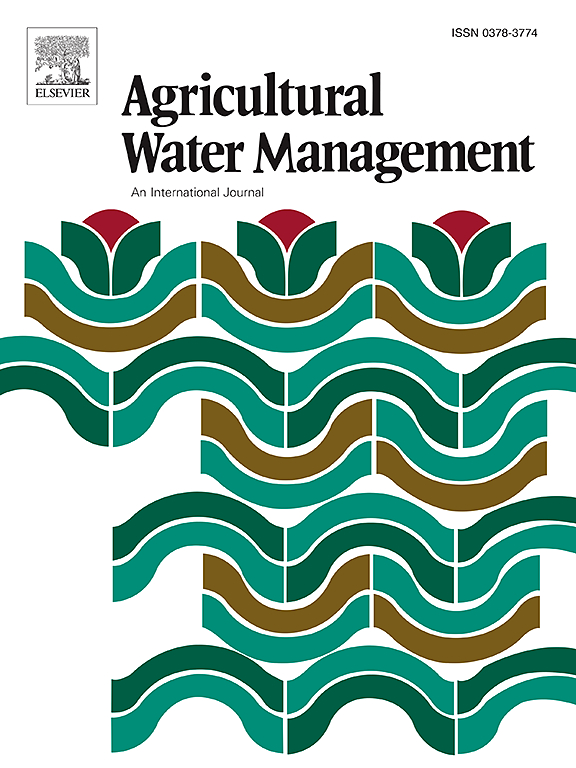Effect of topographical and soil complexity on potato yields in irrigated fields
IF 5.9
1区 农林科学
Q1 AGRONOMY
引用次数: 0
Abstract
Spatial variation of soil moisture as affected by topography and soil textural patterns is an important control on variability of yields in agricultural fields. Site-specific irrigation management could be a way of increasing water use efficiency and evening out yield variability. A better understanding of regional landscapes is required to identify which types of fields could benefit from SSIM. The causal influence of landscape characteristics on yields under irrigated conditions is poorly understood. Here, a new approach is used to infer the causal impact of topography and soil properties on yields of irrigated potatoes. The analysis comprises a four-year long dataset of potato yield, soil texture, hydrological, topographical, and meteorological variables collected from 99 sites within 19 fields in southern Alberta, Canada, from 2019 to 2022 inclusive. Using a Bayesian linear mixed model, we quantified the effect of topographical complexity (median equal −3.39 MT ha−1), soil texture complexity (median equal −1.97 MT ha−1), and the cases where both were true (median equal −4.47 MT ha−1), on potato yields. Using the same method, we quantified the effect on initial soil water storage with medians equal to −13.1 mm (topographical complexity), 1.7 mm (soil complexity), and −6.7 mm (both). The topographical and soil complexity metrics applied could be used to identify fields that are suitable for SSIM-VRI. Findings are likely specific to the geographical and weather conditions encountered in the study area. We encourage implementation of our method in different regions to determine the generality of our results.
地形和土壤复杂性对灌溉田马铃薯产量的影响
受地形和土壤质地影响的土壤水分空间变异是控制农田产量变异的重要因素。特定地点的灌溉管理可能是提高水利用效率和消除产量变化的一种方法。需要更好地了解区域景观,以确定哪些类型的领域可以从SSIM中受益。在灌溉条件下,景观特征对产量的因果影响尚不清楚。本文采用一种新的方法来推断地形和土壤性质对灌溉马铃薯产量的因果影响。该分析包括从2019年至2022年(含2022年)在加拿大阿尔伯塔省南部19块田地的99个地点收集的四年长的马铃薯产量、土壤质地、水文、地形和气象变量数据集。使用贝叶斯线性混合模型,我们量化了地形复杂性(中位数等于- 3.39 MT ha - 1)、土壤质地复杂性(中位数等于- 1.97 MT ha - 1)以及两者都为真(中位数等于- 4.47 MT ha - 1)对马铃薯产量的影响。使用相同的方法,我们量化了对初始土壤储水量的影响,中值分别为−13.1 mm(地形复杂性)、1.7 mm(土壤复杂性)和−6.7 mm(两者都是)。所应用的地形和土壤复杂性指标可用于确定适合SSIM-VRI的田地。研究结果可能与研究区域遇到的地理和天气条件有关。我们鼓励在不同区域实施我们的方法,以确定我们结果的普遍性。
本文章由计算机程序翻译,如有差异,请以英文原文为准。
求助全文
约1分钟内获得全文
求助全文
来源期刊

Agricultural Water Management
农林科学-农艺学
CiteScore
12.10
自引率
14.90%
发文量
648
审稿时长
4.9 months
期刊介绍:
Agricultural Water Management publishes papers of international significance relating to the science, economics, and policy of agricultural water management. In all cases, manuscripts must address implications and provide insight regarding agricultural water management.
 求助内容:
求助内容: 应助结果提醒方式:
应助结果提醒方式:


